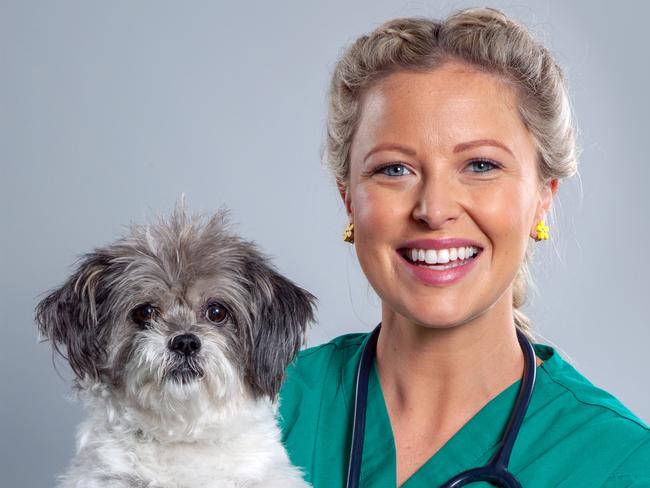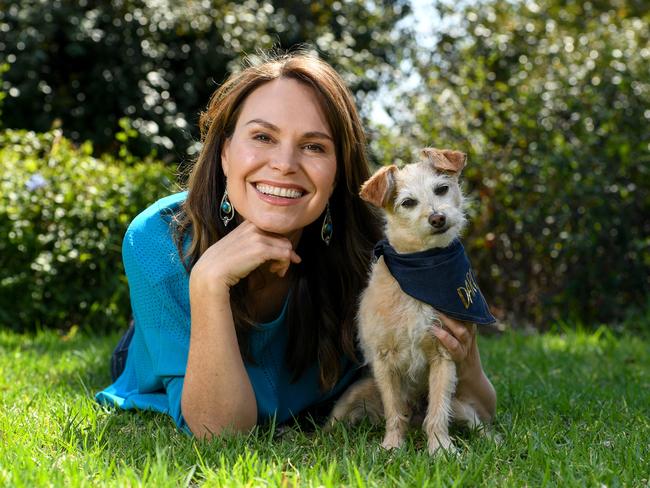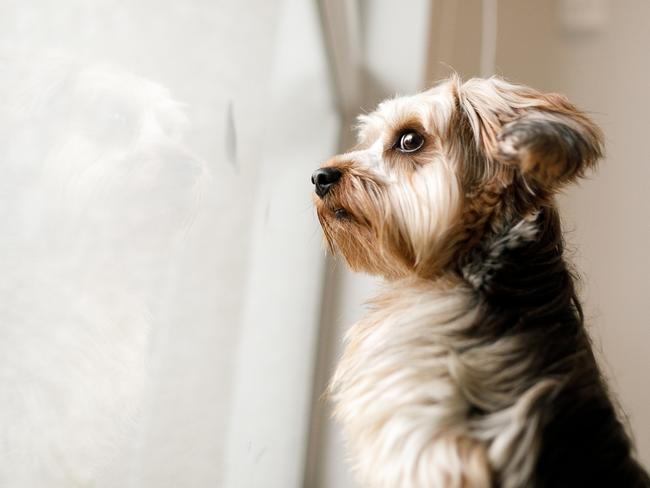Pets suffer from anxiety too. Here’s how to treat it
Separation anxiety in pets is expected to rise as more families head back to work and school. Here’s expert tips to make sure your pet doesn’t suffer.
SmartDaily
Don't miss out on the headlines from SmartDaily. Followed categories will be added to My News.
As with humans, untreated anxiety in pets cannot only seriously impact their quality of life but lead to nasty health issues.
With more dogs and cats relearning how to spend days alone as families head back to work and school, PETstock vet Dr Danni Dusek expects a rise in separation anxiety issues.
“It is important that we transition back to our old routines gradually for our pets to slowly adjust and minimise the risk of causing significant anxiety or stress upon them,” Dusek says.

“Anxiety is common in dogs and cats and the clinical signs you notice can be similar or very different depending on the individual. The good news is, there is a lot we can do to help.”
FINDING COMFORTABLE SOLUTIONS
Dog behaviourist, TV host and PETstock ambassador Lara Shannon says human company is often the best fix for pet anxiety so if this is not possible, your smell is the next best thing.
“If we’re talking about separation anxiety, one of the biggest tools is to allow your dog inside,” she says. “Leave your bedroom door open so they can hop on your bed, put a special blanket down if you’re worried about fur.”
She says for pets needing human interaction, breaking up their day by getting a dog walker or someone visiting your cat or dog can help.

ENCOURAGE INDEPENDENCE
Dusek recommends creating a safe haven in your home where your dog or cat can escape to and feel more secure.
This should be a place where no children can get to and has treats or toys for the pet. Encourage your pet to go to their safe haven and ensure they are relaxed when in there to encourage them to use it when you are not home.
SET OFF THEIR SENSES
Both Dusek and Shannon recommend including pheromones for cats and dogs – Feliway produces diffusers, sprays and scratchers for cats and Adaptil has diffusers, sprays and collars for dogs – in your anxiety treatment plan. Catnip spread around the house can also encourage feline relaxation.
CHANGE YOUR ROUTINE
Dogs are watching our every move, Shannon says, so they know our patterns leading up to the moment we depart, and their anxiety builds.
“So change your routine, grab the keys first then have breakfast, go to the car and put everything in then come back inside for a bit,” she says.
WHEN TO MEDICATE
Dusek says if an animal appears to be really struggling with anxiety, medications can offer relief.

“Once our pet’s anxiety is under control with appropriate medication, the goal is to use behaviour modification training to train them how to relax and feel safe with increased time and distance away from their loved ones.”
EXERCISE IS THE KEY
Find ways to make cats and dogs work for their food when you’re not home – such as interactive toys – to provide physical exercise and mental stimulus.
“You also need an exercise routine for dogs where they know when to expect it,” Shannon says. “So if you’ve been spending more time at home and walking them at random times, you need to start creating a routine now.”
*Pet advice supported by PETstock

